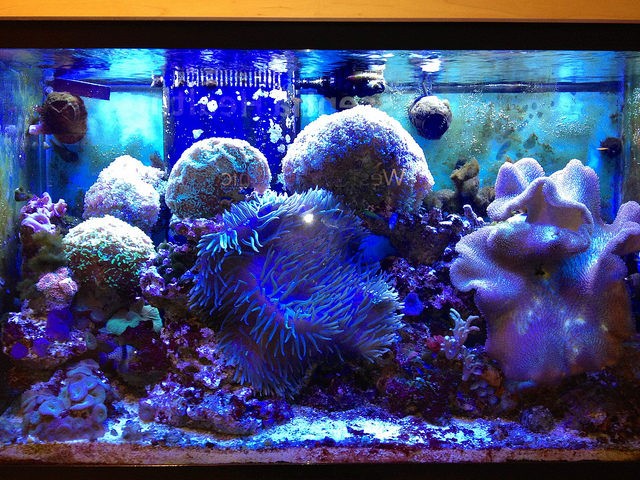An English family and four of the firefighters who responded to their call on March 26 were hospitalized after a fish tank cleaning gone wrong.
Chris Matthews of Steventon, England, was simply cleaning his fish tank. In doing so, he removed some coral from one of the rocks inside it. The next day, he and his family — and even their two dogs — were beset by severe flu-like symptoms. Luckily, Matthews’ familiarity with the potential dangers of coral poisoning prompted him to call for emergency services. Of the fifty responders mindful of the potential danger, four are now recovering alongside the family.
The culprit was a potent “palytoxin,” one of the most potent non-protein substances on Earth, second only to maitotoxin. It causes intense constriction of blood vessels and is capable of poisoning every type of cell in the body. Symptoms of palytoxin exposure include a “bitter/metallic taste, abdominal cramps, nausea, vomiting, diarrhea, mild to acute lethargy, paresthesia, bradycardia, renal failure, impairment of sensation, muscle spasms, tremor myalgia, cyanosis, and respiratory distress.”
Some of the most common corals sold in fish tanks carry the deadly palytoxin and must be handled while immersed in water if at all to prevent its escape into the air. Unwary tank owners often try and scrape the anemone-like coral from where it spreads over the rocks in their fish tanks, or worse yet, pour boiling water over them in hopes of easier removal.
Thus far, there have been no reported deaths from simple inhalation and only 10-20 deaths from inadvertently eating seafood tainted with it. Despite the misery, the dogs were in more danger than anyone else at the scene. The required lethal dose of palytoxin in dogs is very low, and so little is required that it is unknown exactly how many pets may have perished this way because post-mortem tests remained inconclusive.
The UK’s Ornamental Aquatic Trade Association has recently released new advice to help prevent palytoxin poisoning. In dealing with the “zoantharian” coral that carries palytoxin, they advise against “pouring boiling/hot water over live rock/zoantharian colonies, microwaving live rock/coral frag plugs, pressure (steam) cleaning aquarium ornaments or rock which may have been colonised by zoantharians,” and “washing live rock under running water /using a water sprayer (especially if using a brush as well).”

COMMENTS
Please let us know if you're having issues with commenting.